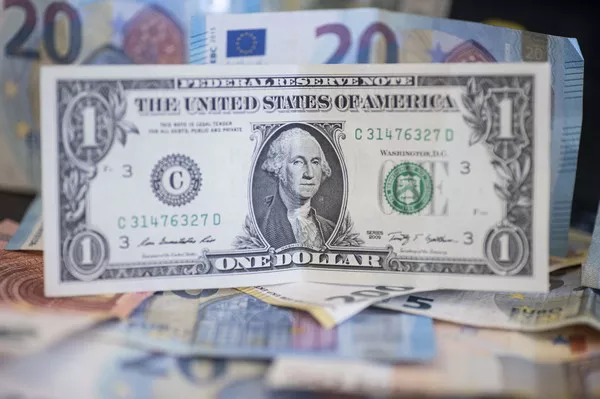In the complex world of global finance, various indicators and metrics help market participants make informed decisions. One such vital metric is the U.S. Dollar Index, often abbreviated as USDX. This index plays a pivotal role in assessing the strength of the United States Dollar (USD) relative to a basket of other major world currencies. In this article, we will delve into what the U.S. Dollar Index is, its components, calculation method, significance, and its role in international finance.
What Is the U.S. Dollar Index?
The U.S. Dollar Index is a measure of the value of the U.S. dollar relative to a basket of foreign currencies. Specifically, it compares the USD against six major world currencies:
Euro (EUR)
Japanese Yen (JPY)
British Pound Sterling (GBP)
Canadian Dollar (CAD)
Swedish Krona (SEK)
Swiss Franc (CHF)
The index is essentially a weighted average of the exchange rates between the USD and these six major currencies. It provides a clear and standardized way to assess the USD’s performance in the global currency market.
Components of the U.S. Dollar Index
Each of the six major currencies included in the U.S. Dollar Index is assigned a specific weight based on its importance in international trade and finance. The Euro holds the largest weight, as it is the most widely used currency in the world after the USD. The weightings are as follows:
Euro (EUR): 57.6%
Japanese Yen (JPY): 13.6%
British Pound Sterling (GBP): 11.9%
Canadian Dollar (CAD): 9.1%
Swedish Krona (SEK): 4.2%
Swiss Franc (CHF): 3.6%
These weightings are periodically reviewed and adjusted to reflect changes in international trade and currency usage.
How Is the U.S. Dollar Index Calculated?
The U.S. Dollar Index is calculated using a straightforward formula:
USDX = (EUR Weight * EUR Exchange Rate) + (JPY Weight * JPY Exchange Rate) + (GBP Weight * GBP Exchange Rate) + (CAD Weight * CAD Exchange Rate) + (SEK Weight * SEK Exchange Rate) + (CHF Weight * CHF Exchange Rate)
To calculate the index value, the exchange rates for each currency in the basket are multiplied by their respective weights. The resulting values are then summed to arrive at the USDX. This calculation process ensures that the index accurately reflects the USD’s performance against the selected currencies.
Significance of the U.S. Dollar Index
The U.S. Dollar Index serves several important purposes in global finance:
1. Assessing USD Strength: The primary role of the index is to gauge the strength or weakness of the USD relative to other major currencies. When the USDX rises, it indicates that the USD is appreciating against the basket of currencies, while a falling index suggests USD depreciation.
2. Investment and Hedging: Traders, investors, and multinational corporations use the U.S. Dollar Index to assess potential risks and opportunities in currency markets. It helps them make informed decisions regarding currency exposure, investment strategies, and hedging against currency fluctuations.
3. Economic Indicator: Changes in the U.S. Dollar Index can provide insights into the overall health of the U.S. economy. A rising USDX can indicate economic strength, while a declining index may signal economic challenges.
4. Monetary Policy: Central banks, including the U.S. Federal Reserve, monitor the U.S. Dollar Index as part of their policymaking process. Movements in the index can influence decisions related to interest rates and currency interventions.
5. Global Trade: The U.S. Dollar Index plays a crucial role in international trade. Many commodities, such as oil and gold, are priced in USD. Consequently, changes in the index can impact the cost of imported goods and affect trade balances.
Role in International Finance
The U.S. Dollar Index’s significance extends beyond the financial markets. It plays a central role in international finance and diplomacy. Here are some key aspects of its role:
1. Foreign Exchange Reserves: Central banks worldwide hold significant reserves of USD due to its status as the world’s primary reserve currency. The U.S. Dollar Index helps these banks monitor the value of their reserves and make decisions about their currency holdings.
2. Trade Negotiations: Currency values, as measured by the U.S. Dollar Index, can influence trade negotiations. A stronger USD can make U.S. exports more expensive, potentially impacting trade agreements and diplomatic relations.
3. Global Financial Stability: The USD’s strength, as reflected in the index, can impact global financial stability. Sudden and significant movements in the index can trigger market volatility and affect the stability of financial institutions and economies worldwide.
4. Currency Pegs: Some countries peg their currencies to the USD, meaning their exchange rates are directly tied to the value of the USD. These pegs are often adjusted based on changes in the U.S. Dollar Index.
Conclusion
The U.S. Dollar Index is a critical tool in the world of international finance. It provides a standardized measure of the USD’s performance against a basket of major currencies, offering valuable insights for traders, investors, policymakers, and central banks. Its role extends beyond financial markets, impacting global trade, diplomacy, and economic stability. As long as the USD remains a dominant force in the global economy, the U.S. Dollar Index will continue to be a key indicator in assessing currency dynamics on a global scale.


